Want to build a loyal, local audience on Facebook? Wonder what types of content to post?
To explore how to create organic Facebook content that builds a loyal following that turns into customers, I interview Allie Bloyd on the Social Media Marketing Podcast.
Allie is the founder of Allie Bloyd Media, a company that specializes in training local business marketers, and host of the Marketing Ink podcast. Her course is called Remodel Your Marketing.
Allie shares how to identify categories to develop your organic post content. You'll also learn how to attract different kinds of customers with messaging that speaks to their specific needs.
Listen to the Podcast Now
This article is sourced from the Social Media Marketing Podcast, a top marketing podcast. Listen or subscribe below.
Where to subscribe: Apple Podcasts | Spotify | YouTube Music | YouTube | Amazon Music | RSS
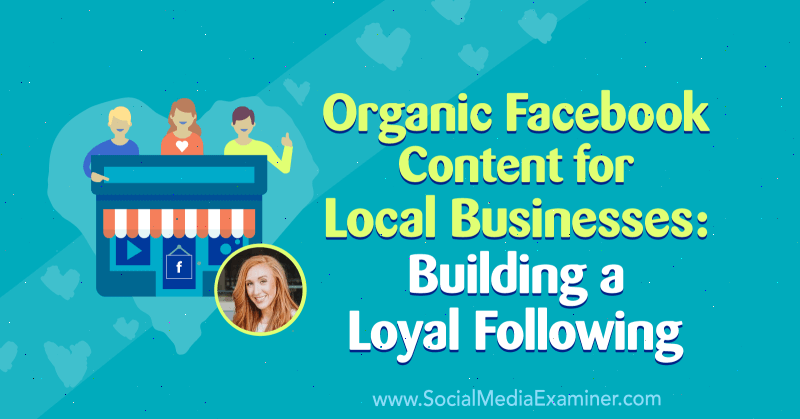
Why Organic Facebook Content Matters Right Now
We're recording this in June 2020 during the COVID-19 pandemic and many people are working from home. This presents a problem for local businesses that have, in the past, relied on in-person networking events, traditional signage or billboards, and foot traffic for customer acquisition.
As these sources diminish, it's more important than ever to remain top of mind with consumers so they remember you when things start opening back up. How? You need to show up where people are spending their time—online—and develop a relationship with them by having two-way conversations.
Right now, many people are spending much of their time on Facebook, which makes the platform ideal for building that relationship. Organic content plays a key role in that process.
Organic content that showcases your expertise and credibility, builds trust, and gets people excited about what you do or who you are as a business owner or a team makes converting people with paid advertising much more likely.
Developing Organic Content for Your Business
Deciding what to talk about or say with your content is more important than the amount of time you spend on social media or how many times a week you post.
Unfortunately, the biggest challenge many business owners face is having no idea what to say on social media. Far too frequently, they post content that isn't well thought-out. Funny cat videos and “Happy Friday!” images do nothing to bring a business closer to achieving a goal like generating leads or sales.
Instead, you want to create content that shows your target audience just how much they need whatever it is you provide.
Get World-Class Marketing Training — All Year Long!
Are you facing doubt, uncertainty, or overwhelm? The Social Media Marketing Society can help.
Each month, you’ll receive training from trusted marketing experts, covering everything from AI to organic social marketing. When you join, you’ll also get immediate access to:
- A library of 100+ marketing trainings
- A community of like-minded marketers
- Monthly online community meetups
- Relevant news and trends updates
Allie has developed a process for drilling down into super-specific, individualized topics of interest for any audience. And once you recognize what those topics are going to allow you to do—or know—about your audience, you'll have discovered a truly powerful thing.
Outline Your General Core Categories
This first step relies on knowing your industry, your customer, and the products and services you provide. Ask yourself a few different questions:
- What are your products and services?
- What are your industries or the niches within your industry?
- What do your ideal clients really care about or focus on?
Too many businesses believe that their direct products and services are the only things they have to talk about. But content can go so far beyond that.
A running store could obviously talk about running and encourage existing customers to buy more running shoes. But they should also create content to grow brand-new categories of consumers.
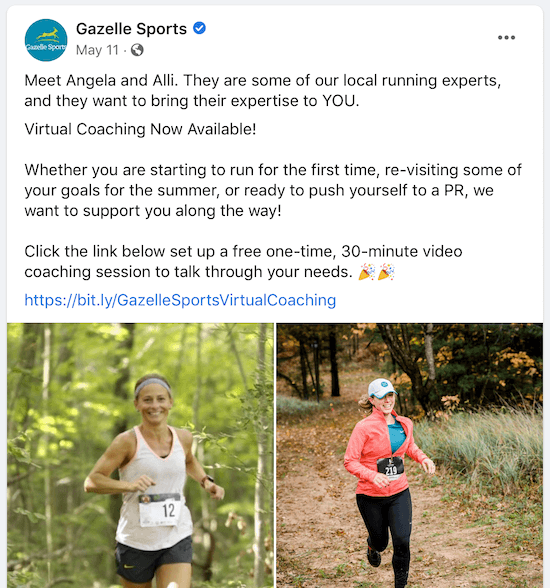
People who exercise and want to do a 5K but are worried about the distance are a good example. If those people don't stick with running, they're not likely to visit a running store. But if the store posts content designed to encourage those people and help them increase the distance of their runs, the store will have cultivated new customers.
Those new runners are a great opportunity because they need the most help and education, and they want someone to guide them. They really could come to rely on the business for more than just shoes; it could become their running consultant.
So, with the answers to the first three questions in mind, start making a list of 10–15 core general categories that apply to your business. These general categories can have a direct relation to your products and services, as well as topics of interest to your buyers. They may even include some adjacent categories—things that differ from but somehow tie into what you do.
A running store's category list might start with shoes and then go on to include distance running, exercise, nutrition, safety, overall health, self-care, and so on. Because active people care about different, very localized things going on in their city, community activities can be a great category for any local business.
By coming up with these categories, you can identify potentially hundreds of specific content topics that will spark ideas for paid and organic content. Allie's next step will help you get super-specific with very individualized topics.
If you find it challenging to list 10–15 very general categories related to what you do, go back and learn more about your business, your customers, and the other things that are of interest to them.
Develop Subcategories
Next, create three to five subcategories under each of your core categories.
Using the running store example, subcategories could be running form, running trails, running shoes, or stretches for runners.
There may be some overlap between subcategories and related core categories, and that's okay. You're just trying to break things down as specifically as possible to make it easier to come up with those final topics. If nutrition was a core category, you could break it down further into subcategories of breakfast, lunch, dinner, and snacks.
Identify Specific Topics
Now it's time to drill down to the very specific topics you're going to talk about. If running is your core category and running shoes is one of those subcategories, perhaps asking something like, “Which running shoes are best for me?” can bring a topic area into focus.
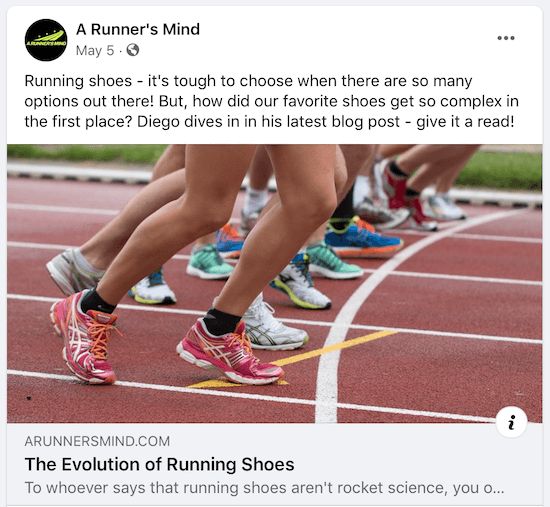
If you're posting about how to find the best running shoes, start asking yourself, “What are people really asking me? How do I know which shoe is the best fit? Should running shoes be tighter or looser? Are there certain types of shoelaces that will prevent me from tripping while I run? Which brands of running shoes are best for runners? Which running shoes put less pressure on my knees? Which running shoes are best for people with flat feet?”
The list goes on and on. You can break down information about running shoes by style, size, and brand. You could talk about specific upgrades or the different shocks and springs in running shoes.
As a business owner, you've had a good amount of interaction with potential clients and current customers. More than anyone, you know what they're asking for. You know what they're interested in. And you know what they don't know. Sometimes it's not about giving someone an answer they're already looking for. It can be giving them an answer to a question they didn't even realize they had.
Brainstorm three to five topics under each of your subcategories. If you have five subcategories and five topics for each, that's 25 specific content ideas, which is more content than most people put out in a month. If you do three pieces of content per week, that's enough content for 2 months of posts. As you work through this process, you'll end up with hundreds of different individual topics.
Use Organic Content to Attract and Identify Qualified Leads
Local businesses generally don't have crazy advertising budgets. They also don't have all the time in the world. Their goal, if you ask most of them, isn't necessarily to get unlimited leads, it's to get qualified leads who actually need what they sell and have the ability to buy it.
The most qualified lead is going to come from someone who has raised their hand by consuming that business's content. Use your content to ask, “Does this show me—by them consuming or engaging with my content—that they're a qualified potential prospect for me?”
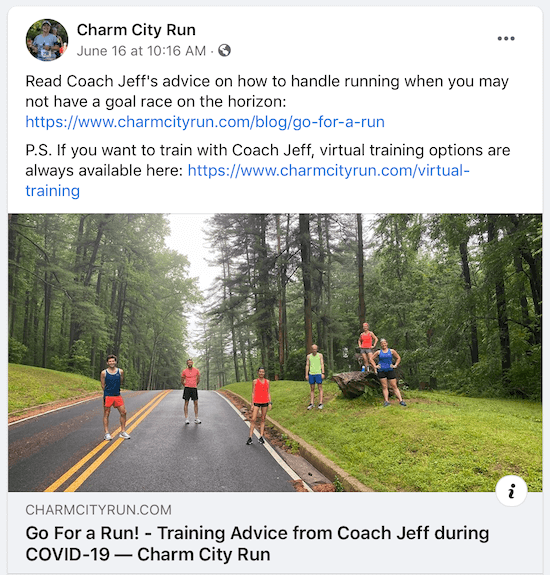
If the running store puts out a piece of content titled, “Five Great Recovery Foods for Runners,” anybody who watches that video for any significant amount of time; clicks on a link to read that article; or shares, likes, or comments on that post is very likely a runner or a wannabe runner. Why? Because anyone who isn't interested in running also wouldn't care about recovery foods for runners. By creating that type of content, you can really help identify great prospects for you.

Discover Proven Marketing Strategies and Tips
Want to go even deeper with your marketing? Check out the Social Media Marketing Podcast! Publishing weekly since 2012, the Social Media Marketing Podcast helps you navigate the constantly changing marketing jungle, with expert interviews from marketing pros.
But don’t let the name fool you. This show is about a lot more than just social media marketing. With over 600 episodes and millions of downloads each year, this show has been a trusted source for marketers for well over a decade.
Use Client Avatars to Inform Your Content Creation
To continue with our example, our running store's client avatars could include experienced runners, people who've never run but are thinking about it, and newbie runners who want to stick it out.
The topics that will appeal to those three groups are very different; not every topic will work for everyone. A marathon runner, for instance, doesn't need to be educated on the benefits of running, nor do they need tips for training to run a 5K. That's why really understanding who you're selling to in the beginning is such an important part of this process.
Pay Attention to Triggering Events
A triggering event is when someone first becomes aware that they need you, or becomes more receptive to what you have to offer.
If you can build a relationship with your audience at the earliest point when they need help, you have the potential to be with them for a very long time and deepen that relationship before they ever seek out any other businesses in your industry. With the right content at the right time, you can block the competition, make the relationship stronger, and actually drive a new group of consumers to your business.
One of Allie's students is a wedding photographer who also does maternity, newborn, and family photos. Their triggering event is when someone gets engaged because that's the moment when most people—for the first time in their lives—think about professional photography. If that photographer can capture them at that engagement-photo stage, build a relationship, wow them with value, and show how great they are overall, that client may never leave them. Why would they?
If you're happy with somebody who's providing a service or who you're buying a product from, you're done shopping around. So building the relationship when the interest is high and the competition is minimal—during a triggering event—is huge.
Every business is going to have some type of triggering event. Understanding the reasons your clients come to you is a great place to start. Listen to the conversations you have with them. Ask people questions like, “What made you come by today? What made you schedule this appointment? What prompted you to make this call today?” Keep a list of their answers because those triggering events can be incredibly powerful things to create content around.
Create Your Own Content to Develop Custom Audiences for Ads
Are you wondering, “Do I need to create my own videos? Do I need to link to my own content? Can I link to someone else's video or share someone else's video? Can I link to someone else's content, curate it, and still accomplish the same objectives?”
Allie says you can but it's more powerful to create your own content, especially video content. Your video doesn't have to feature the owner or manager; you can feature anyone from your business who feels comfortable talking about the content topics you want to cover.
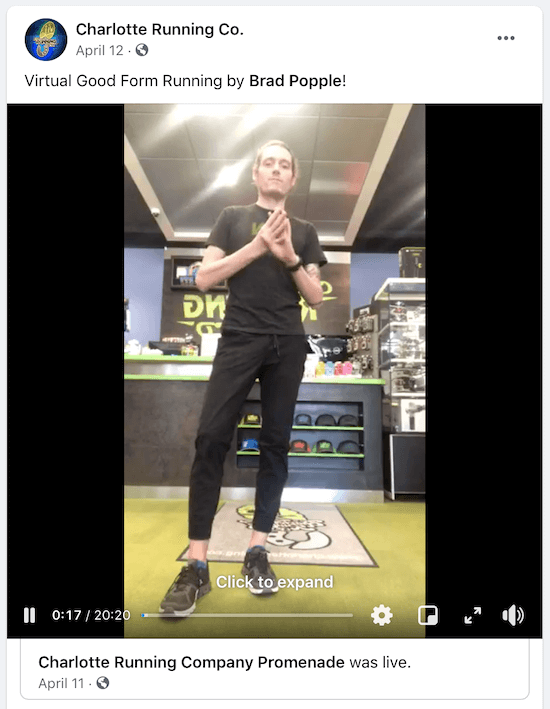
If you do link to other people's content, it should generate engagement that builds a Facebook custom audience. However, Allie says you should segment your custom audiences by the types of content that you're putting out, which you can only do with original content. To visualize this, if you've got a video about the best ways to shave down your Ironman running time, that's clearly for an advanced runner. Content about three ways to run a mile without quitting is for a brand-new runner.
If you're linking to other people's content, there's no way to segment the people who engaged with those two types of content into separate audiences. But if you create your own content, you can segment the people who engaged with content for experienced runners into one audience and people who engaged with content for new runners into another audience.
That makes targeting the right audience with the right ad much easier. Even if your offer is the same, you'll speak to those two customer segments differently based on what you know of their fears and their desires, their hopes and their challenges.
Audience Targeting for Facebook Ads
A website custom audience lets you target anybody who visits a specific page on your website, spends a certain amount of time there, or visits one page but not another during a specific time frame. The maximum time frame is 180 days.
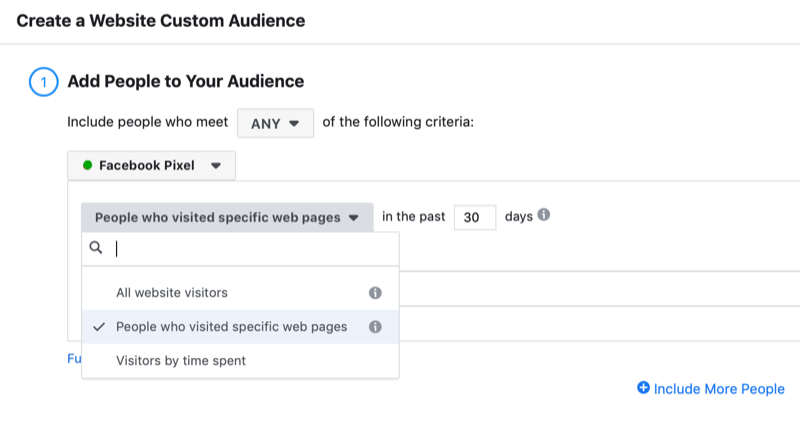
An engagement audience lets you target anyone who's engaged with your Facebook business page or your Instagram business profile during a specific time frame. They could've liked, commented on, shared, or clicked on a post but there's no way to know exactly what they did. The maximum time frame is 1 year.
Video audiences are amazing, especially if you cover very specific topics in each video, because you have the ability to choose exactly which custom audience a video viewer goes into. That means that you can target people who watched Video X for a certain amount of time with an ad that only they'll see.
The “25% of this video watched” option is a good place to start when you're trying to build a warm audience. The maximum time frame for video audiences is also 1 year.
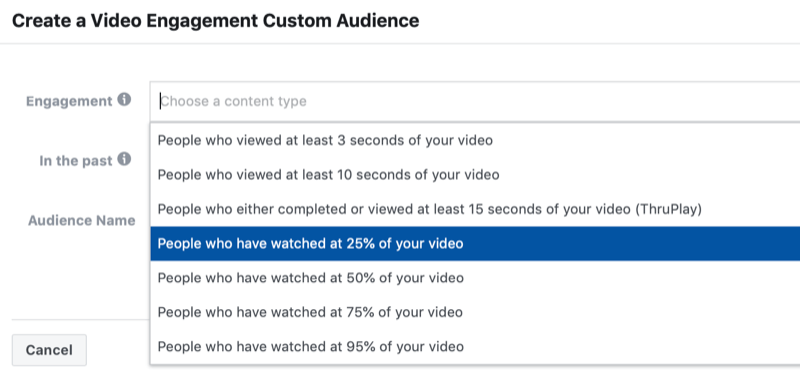
The Connection Between Organic Content and Ads
Most local businesses won't reach enough people organically to justify the time it takes to create their content. If you want to get serious about focusing on social media marketing, you should put a minimal amount of money behind your content.
If you're putting forth the effort to create content for social media, sincerely ask yourself, “Is this worthy of investing money in? By putting this content out there, am I learning anything about my audience or how receptive they are to what I have to offer?” If the answer is no, you probably shouldn't be spending your time creating that content to begin with.
When you do decide to invest just $10 promoting every single piece of content, you're going to reach a lot of new people. Your local community is going to start seeing you a lot more. You'll be able to test creative, topics, and copy. You'll gain valuable insights about your audience.
And if some of that content you're promoting gets heavy engagement—whether it's comments, likes, shares, or views—you can gain a lot of local recognition. But if you don't invest anything, you're never going to get that attention because you're not going to reach enough people on a regular basis organically.
Even if all you can do right now is invest $10 in every piece you create, down the road, when you're ready to start investing more in your actual lead generation-focused ads, you're going to have those audiences in place. You're going to have the community recognition. You're going to have that trust and credibility factor built up, and you're going to be so much more successful because of it.
Key Takeaways From This Episode:
- Find out more about Allie on her website.
- Follow Allie on Facebook and Instagram.
- Join Allie's Remodel Your Marketing – Local Growth Community Facebook group.
- Listen to Allie's Marketing Ink: Big Ideas for Local Businesses podcast.
- Download the Social Media Marketing Industry Report.
- Watch exclusive content and original videos from Social Media Examiner on YouTube.
- Watch our weekly Social Media Marketing Talk Show on Fridays at 10 AM Pacific on YouTube.
Help Us Spread the Word! Please let your Twitter followers know about this podcast. Simply click here now to post a tweet.
If you enjoyed this episode of the Social Media Marketing podcast, please head over to iTunes, leave a rating, write a review, and subscribe. And if you listen on Stitcher, please click here to rate and review this show.
What do you think? What are your thoughts on developing Facebook organic post content for your local business? Please share your comments below.
Attention Agency Owners, Brand Marketers, and Consultants

Introducing the Marketing Agency Show–our newest podcast designed to explore the struggles of agency marketers.
Join show host and agency owner, Brooke Sellas, as she interviews agency marketers and digs deep into their biggest challenges. Explore topics like navigating rough economic times, leveraging AI, service diversification, client acquisition, and much more.
Just pull up your favorite podcast app, search for Marketing Agency Show and start listening. Or click the button below for more information.

